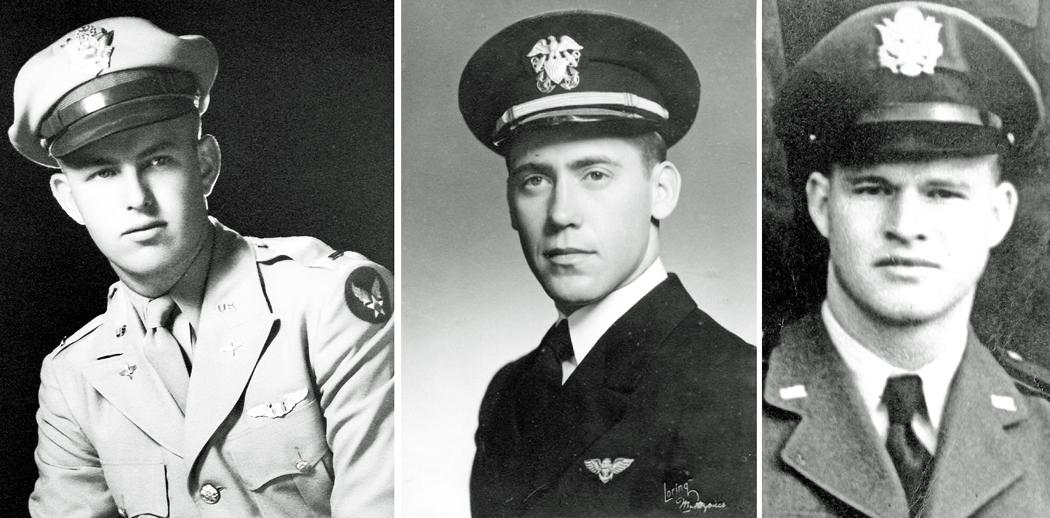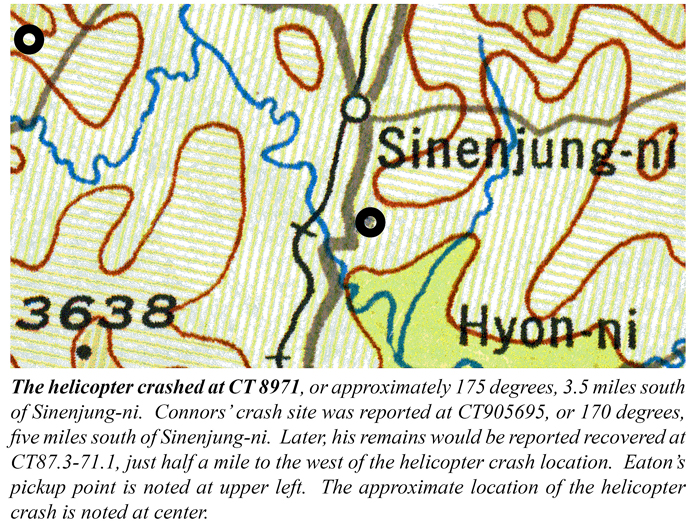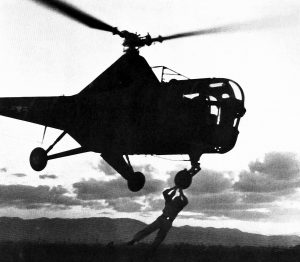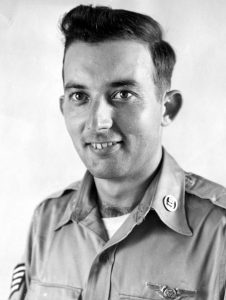Our Korean War Veterans saved a nation from a future of unimaginable bleakness, restored an Ally, and stopped Communist aggression. They did so not for glory or national grandeur. They defended Freedom, protected Freedom, and preserved Freedom in Korea because the United States of America, asked these “Greatest Generation” young men to do so. That is worth remembering and respecting.
Nearly seventy years after they received the life-changing — “I regret to inform you…” telegrams that their loved ones were Missing in Action, many American families have renewed hope that the remains of their American heroes may yet be returned from North Korea for the honorable internment they deserve.
Thousands remain unaccounted for.
Previous searches were complicated by not knowing where these soldiers, airmen, and Marines were buried. Recovery searches were carefully controlled by the North Korean government. Reports indicate that most searches took place near former prison camps, a time-effective decision made to ensure as many remains as possible were recovered in the short time allowed by the North Korean government. When successful, most remains were Army or Marine Corps troops. Few were Air Force or Navy pilots who were more likely to perish during missions in remote areas.

However, the burial site of two of the three brave airmen killed in the Korean War’s most deadly helicopter rescue mission is known from reports by both Navy and Air Force records. If asked, the North Korean government could go directly to that site and recover the remains of Capt. Leslie Wayne Lear of Santa Cruz, CA, and Ensign Ronald D. Eaton, of Wilmington, MA. California has 593 Korean War unaccounted for, Massachusetts, 190.

Captain Lear was the incredibly brave pilot of an H-5 Dragonfly helicopter whose mission that hot Wednesday, June 25, 1952, was to fly through blistering ground fire with his medical technician, Sergeant (later MSGT) Bobby D. Holloway of Ruston, LA and San Rafael, CA , to rescue Ensign Ron Eaton, whose F4U Corsair mission from the USS Bon Homme Richard (CV 31) had ended earlier that morning when he was shot down by radar-directed fire near Wonson, a seaport in eastern North Korea.

After two attempts under constant, heavy fire to extract Ensign Eaton from the brush-covered hillside that was “alive with fire,” Lear was wounded and his lumbering little helicopter was shot all to hell. He could have scrubbed the mission and returned to his base, but he didn’t. A third time he trolled the life line through the brush and this time the brave Ensign caught it. Lear wrenched the shaking, damaged helicopter away and down the valley heading towards American lines just 20 miles away. But the rescue was not to last, several miles away the helicopter was hit again, this one bringing it down from low altitude. Three jumped, one survived, Airman Holloway.
Just minutes after the helicopter was shot down, 1st Lt. Archie Connors of Jacksonville, FL, was making a low pass over the scene trying to determine whether there were survivors. Hiding in the brush to avoid ground fire, Holloway saw Connors flip his F-51 Mustang up on its left wing to give him a better view as he flew over so low that Holloway saw him looking down. At that moment, his plane was hit by heavy ground fire. “He went over the hill and out of sight,” Holloway recalled. After a brief radio message that he was hit, Connors dead-sticked his crippled aircraft into a pancake landing about a mile away. He did not survive. The remains of 1st Lt. Archie Connors, USAF were repatriated without explanation in 1955 during Operation Glory.

After evading capture for three days, Holloway was captured by Chinese soldiers. “They jabbered at me for a while. I didn’t speak Chinese and they didn’t speak English…so there you go,” he remembered. However, “when they start motioning at you with a loaded weapon, you get the idea very quickly what it is they want you to do.”
The Korean War is sometimes called the “Forgotten War,” despite the fact that those who fought and died there gave hope and a bountiful future to nearly 50 million South Korean people.
The sacrifices of our Korean War Veterans and the enormous debt we owe them for saving South Korea from tyranny deserve to be remembered and recognized.
We should remember the Korean War is not forgotten to the South Koreans who gained a new future thanks to Korean War Veterans. The Korean War is not forgotten to the many thousands of Veterans and their families whose lives were changed forever as a result of their service and sacrifices while reversing aggression and tyranny. And, the Korean War should not be forgotten by any American since it proved, once again, that the price of peace is eternal vigilance—and a willingness to defend Freedom—ours and our Allies.
We should remember—and honor—our nation’s pledge to bring these heroes home again, if at all possible. I know you share my deeply held belief that we not leave our Veterans who died in the line of duty defending Freedom…or our national honor…behind.
It’s time to bring Wayne, and Ron, and all the other heroes who died protecting Freedom in the Korean War, home again.
© Copyright 2018 BelleAire Press
Other works by Dr. Connors…
Baited Trap, the Ambush of Mission 1890
Now Available As E-Pub

Baited Trap, The Ambush of Mission 1890 is the story of helicopter rescue Mission 1890, one of the most heroic—and costly—air rescues of the Korean War. This harrowing Air Force-Navy mission is explained in compelling detail, creating a detailed personal account of what five incredibly brave and determined Air Force and Navy airmen achieved on June 25, 1952 in the infamous “Iron Triangle.”
The Korean War’s Greatest Love Story
Baited Trap is much more than a heroic war story from the “forgotten war.” It is also the Korean War’s greatest love story, following Wayne and Della Lear, Bobby Holloway, Ron Eaton and Dolly Sharp, and Frankie and Archie Connors as they tried to put their lives and families together even as the Korean War was reaching out to engulf them.
Truckbusters From Dogpatch: the Combat Diary of the 18th Fighter-Bomber Wing in the Korean War, 1950-1953

Truckbusters from Dogpatch is the most comprehensive Korean War unit history yet prepared–over 700 pages summarizing squadron histories and first person accounts—and includes over 1,000 never before published photographs and images, highlighted by the 8 ½ x 11-inch format.
Arguably, Truckbusters From Dogpatch is the most authoritative unit history ever prepared on the Korean War. In addition to consulting formerly classified squadron histories filed monthly throughout the conflict, the author was in touch with hundreds of veterans of the 18th—pilots and ground crew—whose personal recollections add vivid detail and emotion to the facts recounted in the official documents.
Recent Log Entries by CAPT Connors…
Carrier Captain’s Night Orders: “Call Me…”
After reading these Night Orders you can better appreciate what training, attention to duty, and vigilance was required by underway watchstanders in those days. What has changed since then that has resulted in the recent tragic collisions between U.S. Navy ships and other vessels?
“We do it all!” (USS Saipan LHA-2 motto)
Saipan CO, CAPT Jack Renard, was not exaggerating when he noted that “without exception, SAIPAN is the most versatile instrument of peace or war on the seas today.” Like its motto pointed out, SAIPAN could do it all.
In Dire Straits of Gibraltar
I had never taken the ship (aircraft carrier F. D. ROOSEVELT) through the Straits before as the OOD. Now I was expected to do so while the rest of the ship—including the Captain—was fast asleep.
U.S. Navy and back to the future Star Power
The reliance today by U.S. Navy afloat units on satellites and highly complex electronics, all of which are vulnerable to compromise or destruction by an enemy, can also leave us highly vulnerable, particularly if our ships and Surface Warfare Officers are not trained in more traditional methods of navigation and seamanship.
Losing satellites could badly compromise or eliminate satellite navigation. Funny, I trusted the star fixes, but the GPS readings that came later, were suspect. As this Log Entry points out, satellites are vulnerable. They can be hacked or “taken out” in a variety of ways.
But with training, a sextant, the right tables and a handful of stars or a noon day sun, the cosmos will tell you where you are on planet Earth.
Soot, as a weapon? Recalling the Mediterranean Cold War in the Sixties
The watch team cheered, we even heard cheering from PriFly aft of our level. The Captain was happy, the bridge watch team was ecstatic. The Russians on our tail? Not so much! Main Control had “gotten into the War,” and I wrote in the ROOSEVELT’s deck log: “Blew tubes at 1430.”
The In-Port Watch on a U.S. Navy aircraft carrier in the Sixties
Any questions?”
“Not that I can think of,” I replied, then added the required legal response: “I relieve you Sir.”
The fateful words are spoken. From this point on, anything that happens on this watch will be my responsibility.
“Very well, I stand relieved. Quartermaster, LTJG Connors has the deck,” the now off-watch OOD announced to the Watch Team.
I, in turn, step back out onto the quarterdeck to take a look around to see if there are any boats headed towards the ship.
The air is very cold, but refreshing, in small doses.
The far off boats of Cannes, swing in the breeze.
At this distance, the beautiful city rolls itself like a white wave, far into the hills. On the distant horizon, covers the mountains like a picture post card.
Memories of the Fru Dee Roo
When the USS Franklin D. Roosevelt (CV A-42) was towed toward the oblivion of the scrap yard in 1978, she consisted of some 65,000 tons of obsolete steel and equipment–but she left many more tons of memories with the tens of thousands of Navy men who had served aboard her during her 32 years of commissioned service.
The “Rosy” or “Fru Dee Roo” or “Rusty Bucket” to those of us who alternately cussed her amongst ourselves and who fought for her honor with outsiders, was more than just a ship. She was home for some 4,000 men–a floating “town” some 1,000 feet long with over 500 miles of wiring, 150 television receivers, 111 storerooms where some 81,000 items were kept in readiness, and with 12 oil-fired steam boilers that drove it at speeds up to 32 knots. A bit of a “gas hog,” the ship’s boilers burned some four million gallons of fuel per month on average. This “town” carried over 70 warplanes of many types and could launch them at a rate of two per minute.
We were “the stick” in case the “talk softly” part was not successful.
What The Hell Flag Signal
The day the ROOSEVELT got the What the Hell Flag Signal. As the OOD, you knew you had really screwed things up when an oiler gave you the “What the Hell” Flag Signal.
On this afternoon, as we were making our high speed approach on the oiler, the Captain suddenly announced that he had the conn (was maneuvering the ship himself), then announced that Commander “Neversail” had the conn. I was amazed. I assumed that he wanted the new Navigator to get some experience, but to actually let him maneuver the ship (with the Captain making “recommendations” while standing right beside him), was risky as we were barreling down on the unsuspecting oiler. “Things” didn’t go well, as they say.
